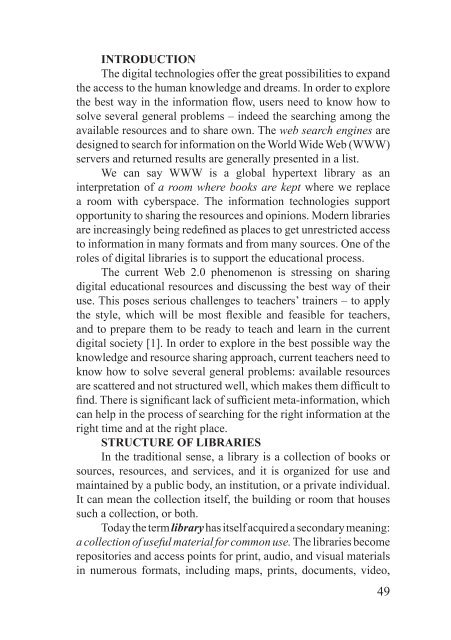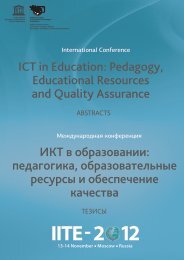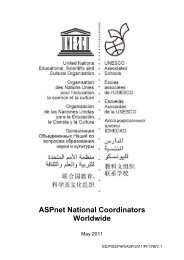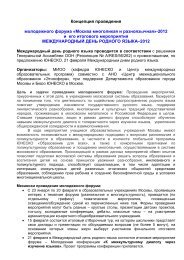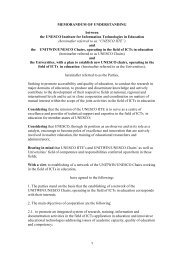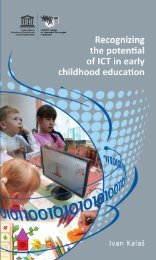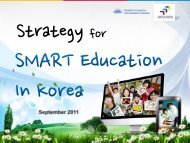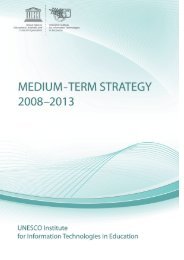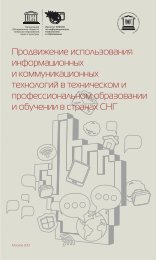ИКТ и качество образования: Ассоциированные ... - unesco iite
ИКТ и качество образования: Ассоциированные ... - unesco iite
ИКТ и качество образования: Ассоциированные ... - unesco iite
You also want an ePaper? Increase the reach of your titles
YUMPU automatically turns print PDFs into web optimized ePapers that Google loves.
INTRODUCTION<br />
The digital technologies offer the great possibilities to expand<br />
the access to the human knowledge and dreams. In order to explore<br />
the best way in the information flow, users need to know how to<br />
solve several general problems – indeed the searching among the<br />
available resources and to share own. The web search engines are<br />
designed to search for information on the World Wide Web (WWW)<br />
servers and returned results are generally presented in a list.<br />
We can say WWW is a global hypertext library as an<br />
interpretation of a room where books are kept where we replace<br />
a room with cyberspace. The information technologies support<br />
opportunity to sharing the resources and opinions. Modern libraries<br />
are increasingly being redefined as places to get unrestricted access<br />
to information in many formats and from many sources. One of the<br />
roles of digital libraries is to support the educational process.<br />
The current Web 2.0 phenomenon is stressing on sharing<br />
digital educational resources and discussing the best way of their<br />
use. This poses serious challenges to teachers’ trainers – to apply<br />
the style, which will be most flexible and feasible for teachers,<br />
and to prepare them to be ready to teach and learn in the current<br />
digital society [1]. In order to explore in the best possible way the<br />
knowledge and resource sharing approach, current teachers need to<br />
know how to solve several general problems: available resources<br />
are scattered and not structured well, which makes them difficult to<br />
find. There is significant lack of sufficient meta-information, which<br />
can help in the process of searching for the right information at the<br />
right time and at the right place.<br />
STRUCTURE OF LIBRARIES<br />
In the traditional sense, a library is a collection of books or<br />
sources, resources, and services, and it is organized for use and<br />
maintained by a public body, an institution, or a private individual.<br />
It can mean the collection itself, the building or room that houses<br />
such a collection, or both.<br />
Today the term library has itself acquired a secondary meaning:<br />
a collection of useful material for common use. The libraries become<br />
repositories and access points for print, audio, and visual materials<br />
in numerous formats, including maps, prints, documents, video,<br />
49


